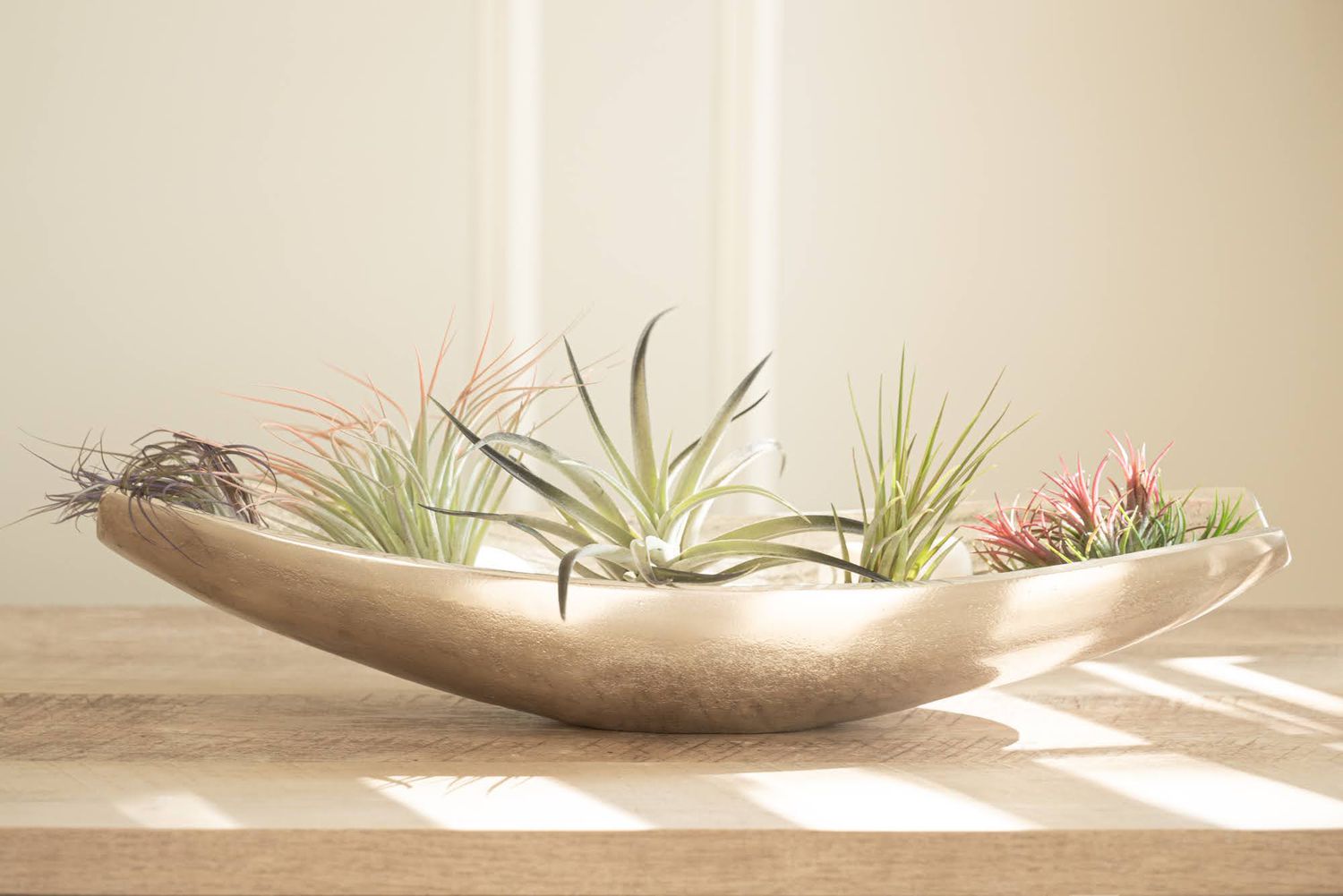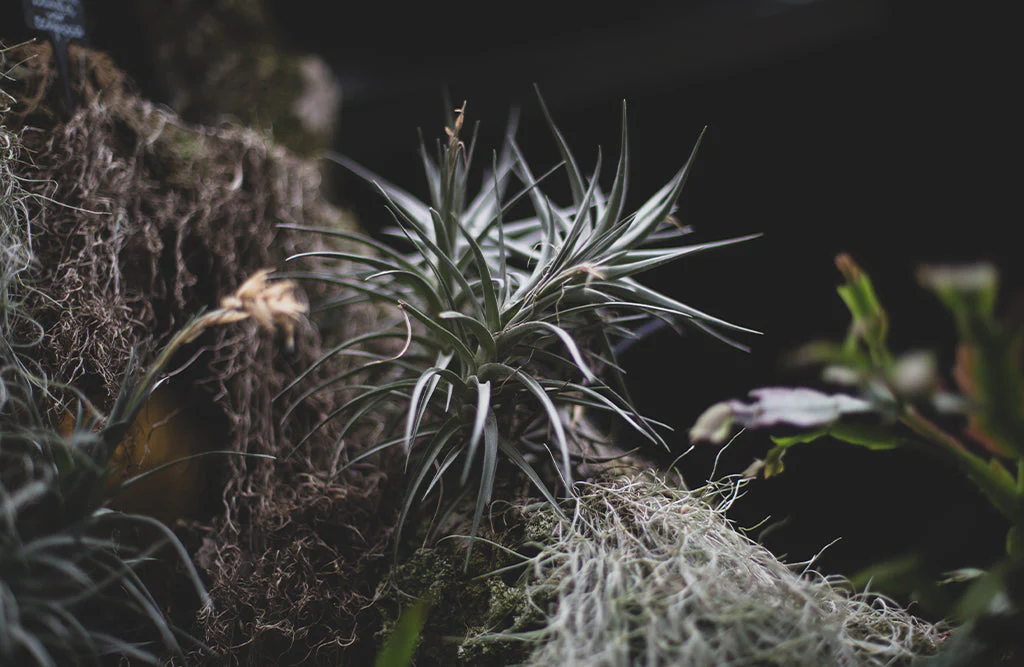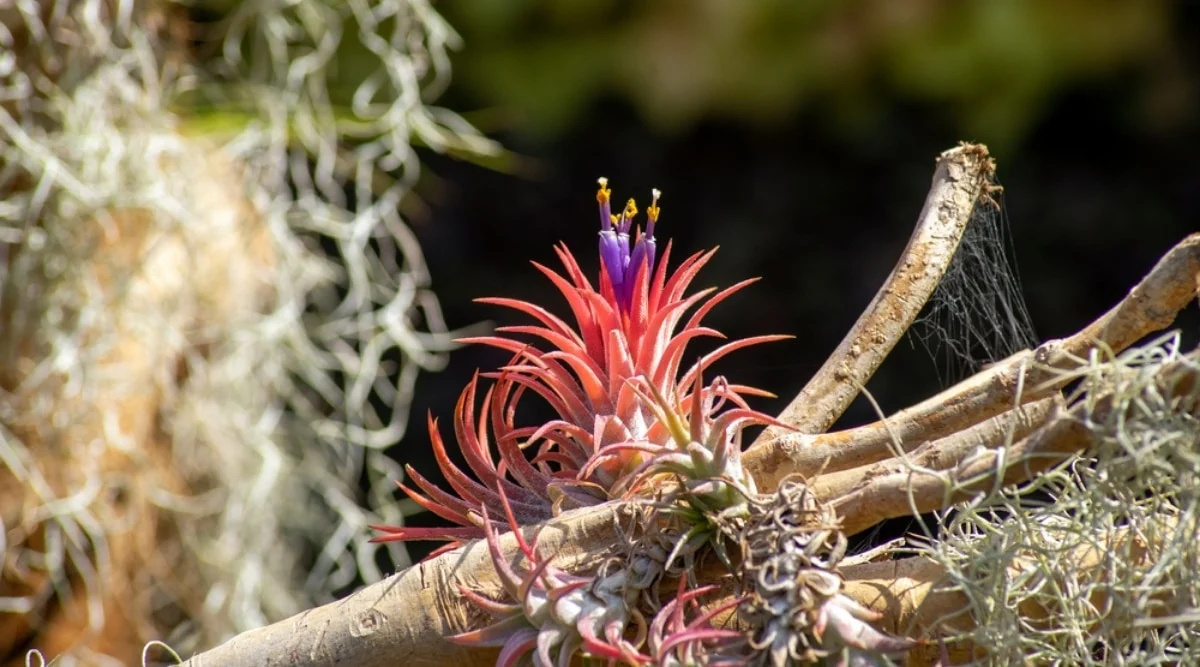Air plants, or Tillandsia, are some of the most fascinating and versatile plants you can add to your home. Unlike traditional plants, they don’t need soil to grow — which means you can display them in creative, artistic ways that no other houseplant allows. These hardy little wonders naturally cling to trees, rocks, and other surfaces in their native Central and South American habitats, absorbing moisture and nutrients from the air through their specialized leaves.
If you’re curious about how to start growing air plants in your home, this comprehensive guide covers everything you need to know — from selecting the right varieties to watering, feeding, and displaying them like a pro.

Why Choose Air Plants?
Air plants offer plenty of reasons to fall in love with them:
- Low-maintenance and beginner-friendly
- No messy soil required
- Unique, modern aesthetic
- Excellent for small spaces and hanging displays
- An impressive variety of shapes, sizes, and colors
Whether you’re a seasoned plant parent or a curious beginner, air plants are an easy and fun addition to any indoor plant collection.
Understanding Air Plants: How They Grow
Air plants belong to the Bromeliad family and come in over 600 varieties. These epiphytes naturally attach to trees, rocks, and other surfaces, using their roots mainly for anchoring rather than nutrient absorption.
Their leaves are covered in tiny, silvery scales called trichomes that absorb water and nutrients directly from the air. This adaptation allows them to thrive in diverse environments from rainforests to arid deserts.
Key fact: Air plants don’t grow in soil — placing them in soil will cause them to rot.

Choosing the Right Air Plant Varieties
Air plants come in a wide range of forms and sizes. Here are a few popular beginner-friendly options:
- Tillandsia ionantha: Compact, bright green with blushing red leaves during bloom.
- Tillandsia xerographica: Large, silver-green rosettes with curling leaves.
- Tillandsia caput-medusae: Unique tentacle-like leaves resembling Medusa’s hair.
- Tillandsia aeranthos: Spiky leaves with purple blooms.
- Tillandsia bulbosa: Bulbous base with curly, narrow leaves.
Choose varieties based on your personal taste, space, and display ideas.
Ideal Conditions for Growing Air Plants
While hardy and adaptable, air plants do have specific needs to thrive indoors:
1. Light Requirements
Air plants love bright, indirect light.
Ideal locations:
- Near an east or south-facing window.
- Under fluorescent or full-spectrum grow lights.
Avoid:
Direct sunlight for extended periods, which can scorch their delicate leaves.
2. Temperature and Humidity
Air plants prefer temperatures between 50°F and 90°F (10°C to 32°C) — making most indoor conditions suitable.
They thrive in moderate to high humidity, typically 50% and above. In dry indoor environments or during winter, boost humidity by:
- Misting plants regularly.
- Placing them in bathrooms or kitchens where humidity is naturally higher.
- Using a humidifier.

How to Water Air Plants
This is where many beginners go wrong — but it’s simpler than you might think.
1. Soaking Method (Recommended)
- Submerge the plants in a bowl of room-temperature water for 20-30 minutes once a week.
- After soaking, shake off excess water gently and place the plants upside down on a towel to dry completely within 4 hours to prevent rot.
- In dry conditions or during warmer months, you might need to soak them twice a week.
2. Misting (Supplementary)
- Lightly mist your air plants 2-3 times a week between soakings, especially if your home is dry.
- Ensure leaves dry thoroughly afterward.
Signs of underwatering:
- Curled, shriveled leaves.
- Dull, grayish appearance.
Signs of overwatering:
- Soft, mushy leaves.
- Browning at the base.
Feeding and Fertilizing Air Plants
While air plants can survive on water and light alone, occasional feeding encourages better growth and blooming.
Use a bromeliad or air plant-specific fertilizer diluted to ¼ strength during watering once a month. This will provide trace nutrients they can’t get from indoor air alone.
Avoid over-fertilizing — too much can damage the delicate leaves.

How to Display Air Plants
One of the joys of growing air plants is their versatility in display options. Since they don’t need soil, you can get creative:
- Hanging glass terrariums
- Mounted on driftwood or branches
- Placed in seashells or decorative bowls
- Attached to wall frames
- Suspended with wire or fishing line
- Grouped in hanging planters or macramé holders
Important tip: Ensure any display allows for good air circulation and easy removal for watering.

Grooming and Maintenance
Air plants are generally fuss-free but benefit from occasional care:
- Remove dead or dried leaves by gently pulling them away.
- Trim brown tips with clean, sharp scissors.
- Keep them dust-free with a gentle rinse under lukewarm water or by misting.
Propagating Air Plants
Air plants reproduce by producing offsets (pups) at their base after blooming.
To propagate:
- Wait until pups are about ⅓ the size of the mother plant.
- Gently twist or cut them away with a sterile blade.
- Treat them like mature plants — no soil needed!
This allows you to expand your air plant collection naturally.
Common Air Plant Problems and How to Fix Them
| Problem | Cause | Solution |
|---|---|---|
| Browning leaves | Overwatering, poor air flow | Allow to dry fully after watering |
| Shriveling leaves | Underwatering, low humidity | Increase watering frequency |
| Rot at the base | Water left sitting in crevices | Always dry upside down post-soak |
| Lack of blooming | Insufficient light or nutrients | Provide brighter light, feed monthly |

Fun Facts About Air Plants
- Most air plants bloom only once in their lifetime, but may live several years.
- Bloom colors range from pink and purple to bright red and orange.
- Some species emit a sweet fragrance during flowering.
- The plant’s trichomes are responsible for its silvery or frosty appearance and moisture absorption.
Final Thoughts
Growing air plants is a unique, rewarding experience perfect for plant lovers looking to branch out from traditional potted greenery. With minimal care, no soil, and endless display possibilities, these hardy little plants bring a modern, organic touch to any home.
To recap:
- Provide bright, indirect light.
- Water by soaking weekly and misting in between.
- Maintain good air circulation and moderate humidity.
- Feed monthly with diluted air plant fertilizer.
- Get creative with display ideas.
- Propagate offsets to grow your collection.
Once you get the hang of caring for air plants, you’ll find yourself wanting to collect more varieties and incorporate them into every corner of your home.





